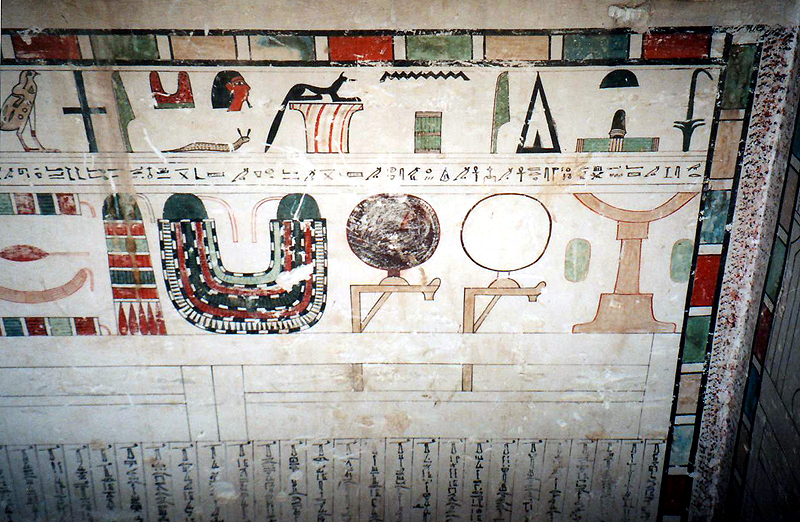
Sarcophagus of Dagi
Egyptian Museum, Cairo.

|
Sarcophagus of DagiEgyptian Museum, Cairo. |
Dagi was vizier (the highest court official) under Mentuhotep II, the founder of the Middle Kingdom. The first register of hieroglyphs on Dagi's sarcophagus begins a conventional offering formula to Anubis, lord of the cemetery, on behalf of the deceased. It reads, from right to left, "An offering which the king gives to Anubis, the one on his mountain, the one in the ut..." The last two phrases are conventional titles of Anubis, but their meaning is obscure. A typical formula would then continue with the name of the deceased and a list of offerings to be provided for his use in the afterlife, such as bread, beer, linen for clothing, and so on.
The Anubis animal is a wild dog or jackal associated as a scavenger with the burial grounds of ancient Egypt. According to Richard Wilkinson (The Complete Gods and Goddesses of Ancient Egypt, pp.187-188), the first title of Anubis ("the one on his mountain") may encode an image of the jackal, sitting upon the hills of the western desert, overlooking the necropolis. The second title ("the one in the ut") refers to the god's role as lord of mummification, and may be translated "he who is in the place of embalming."
Most offering formulas are addressed either to Anubis as lord of the cemetery, or to Osiris as lord of the underworld. Although this example is addressed to Anubis, the offering to Osiris is the more common of the two. The king is credited as donor, because in earliest times it was typically the king who parceled out tombs to his nobles and endowed their funeral cults. The formula then became frozen in convention and could no longer be changed.

|

|

|